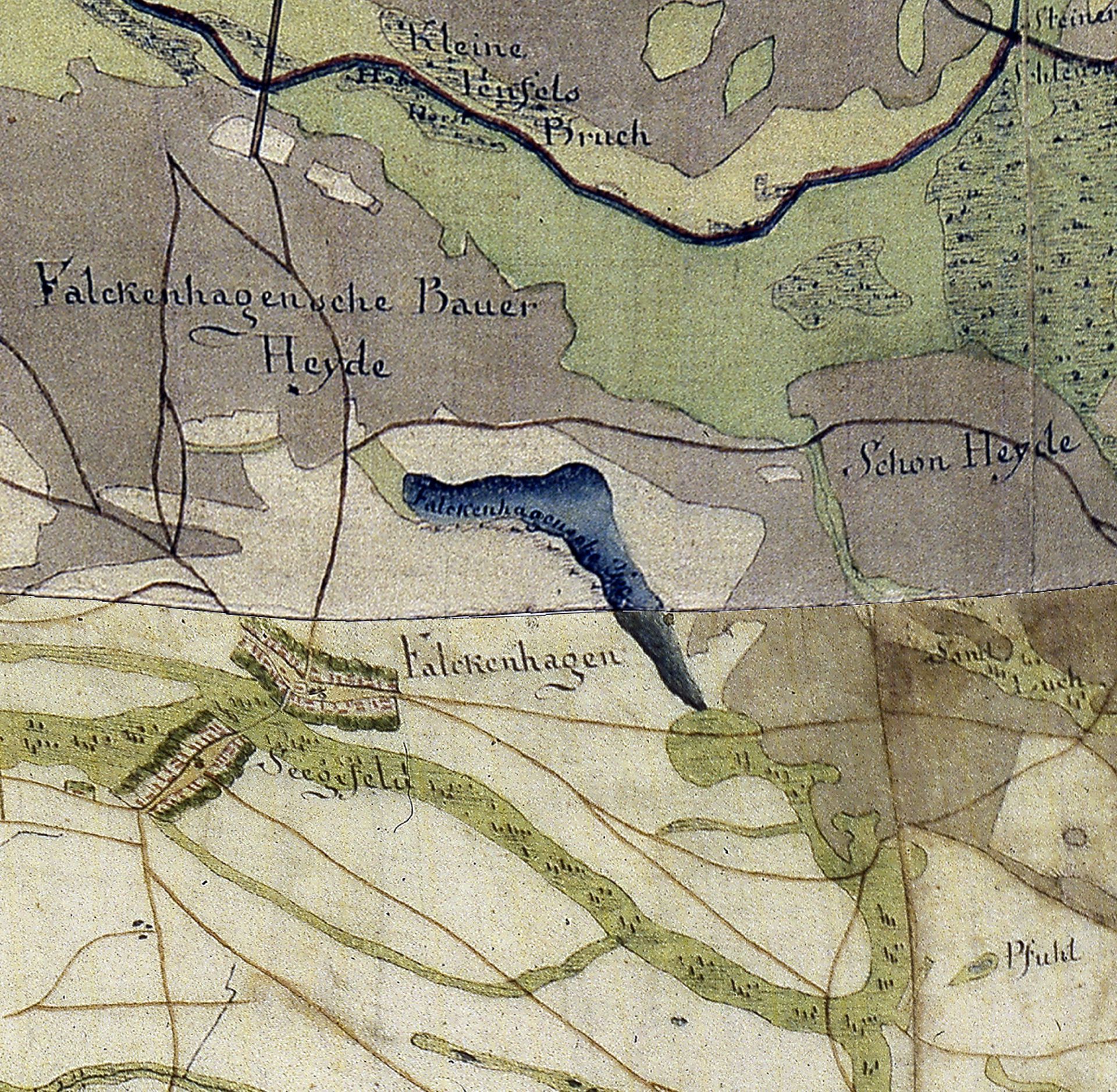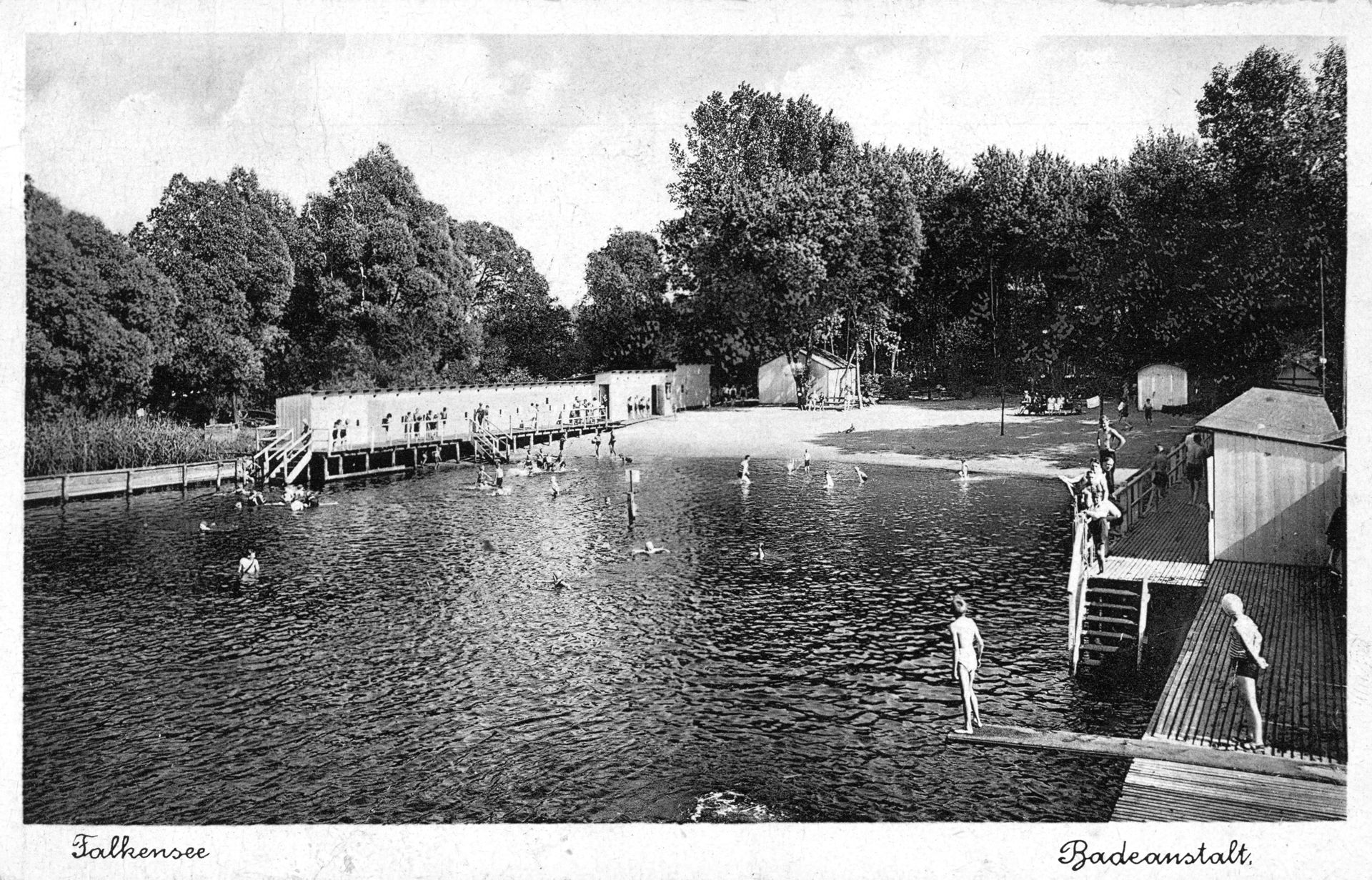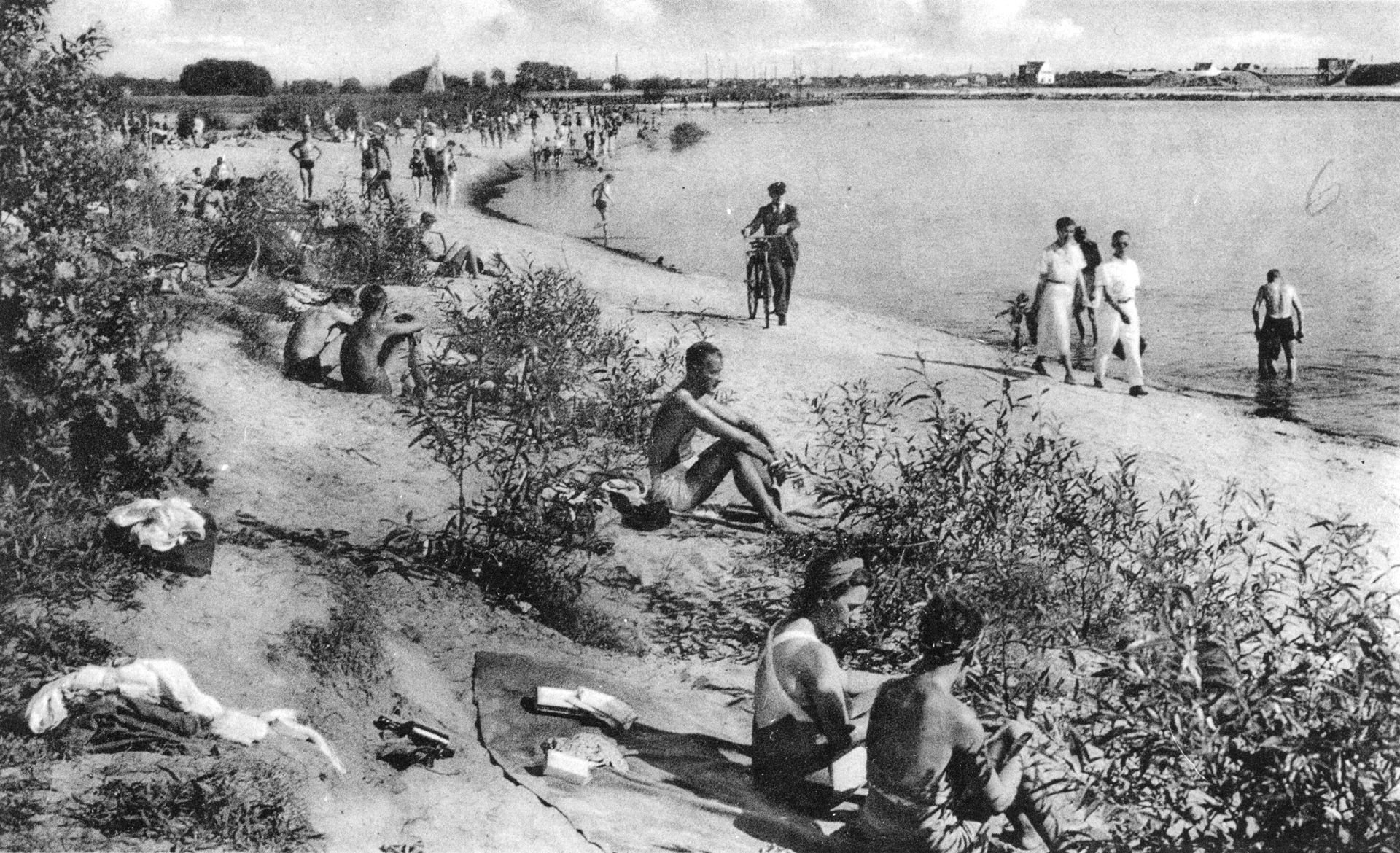Two lakes
The Falkenhagener See and the Neue See
Falkenhagener See and the surrounding area:
Schmettausches map series 1767-1787 
Berlin State Library - Prussian
Cultural Heritage, dl-de / by-2-0
Ice Age formation
The Falkenhagener See, the larger of the two neighboring
lakes, was formed as part of a meltwater channel during the last ice age. With
the disappearance of the glacier ice, lowlands with lakes and drainage channels
remained. One of these lowlands can still be experienced today from the
Falkenhagener See over the Spektegrünzug to Spandau. To the south-east of the
Falkenhagener See you can still find the name "Alter See" on
historical maps.
The Falkenhagener See
The first documentary mention of the village of
Falkenhagen refers to a change of ownership of the Falkenhagener See in 1336.
The knight of Gruelhut donated the lake to the Benedictine nunnery in Spandau
in recognition of the admission of his daughter to the monastery. After that,
the owners changed frequently. In 1919 the municipality of Falkenhagen bought
the lake of the same name and advertised the most beautiful natural bathing
establishment in the entire Mark Brandenburg, located on the southern bank of
the lake. Since the Falkenhagener See has no inflow and the water
level continued to sink, large amounts of water have been channeled into the lake
from the neighboring Havel Canal since 1977. In order to counteract silting up, the city of Falkensee
had the Falkenhagener See desludged from 1992 to 1997 with funding from the
State of Brandenburg. Before the start of the measures, the lake had a maximum
water depth of 1.50 meters and after its completion a depth of around 3
meters.
The Neue See
The new Lake „Neue See", the smaller of the two
lakes, was created through the extraction of sand from 1934 onwards. The sand
extracted was needed for the expansion of the railway line between
Berlin-Spandau and Falkensee as an elevated railway. In 1939 the mining
activities were ended. The dune-like sand hills south of the New Lake still
bear witness to the formation today.
Local recreation and landscape protection
First and foremost, those looking for relaxation will
find a refuge here. An open-air stage on Falkenhagener See, well-tended green
areas and a boat rental were evidence of the great importance of the two lakes
for local recreation in GDR times. The nature reserve "Nauen-Krämer-Brieselang"
has existed since 1998, on the southeastern edge of which lies the
Falkenhagener See with the adjoining lowland. The habitats for rare and
endangered animal and plant species are particularly worthy of
protection.
Bathing establishment at Falkenhagener See, 1930s Postcard, Archive Museum Falkensee Outdoor swimming pool with bathing beach on the Neuen
See, 1940s Postcard, Archive Museum Falkensee








